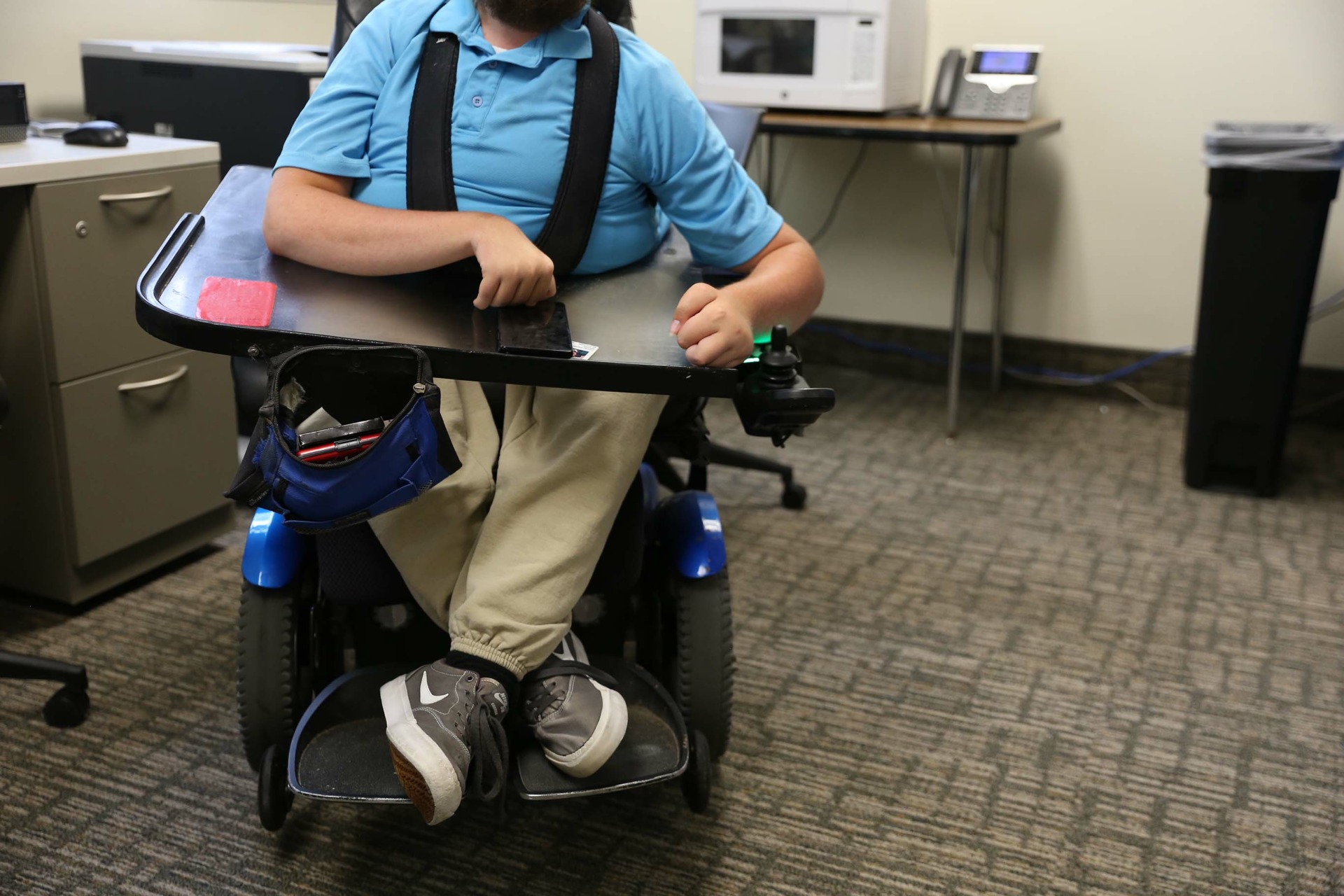
Skateboards, scooters and bikes are the most common form of wheeled transportation on college campuses. The not so common devices are wheelchairs. For BYU’s small wheelchair-using population, everyday life looks different to the typical college student.
For some young adults, Saturday night at a trampoline park means a fun time with friends. For Michael Camit, it meant a trip to the emergency room. With a spinal cord injury traumatic enough to paralyze him from the chest down, Camit is now one of BYU’s few students who navigate campus in a wheelchair.
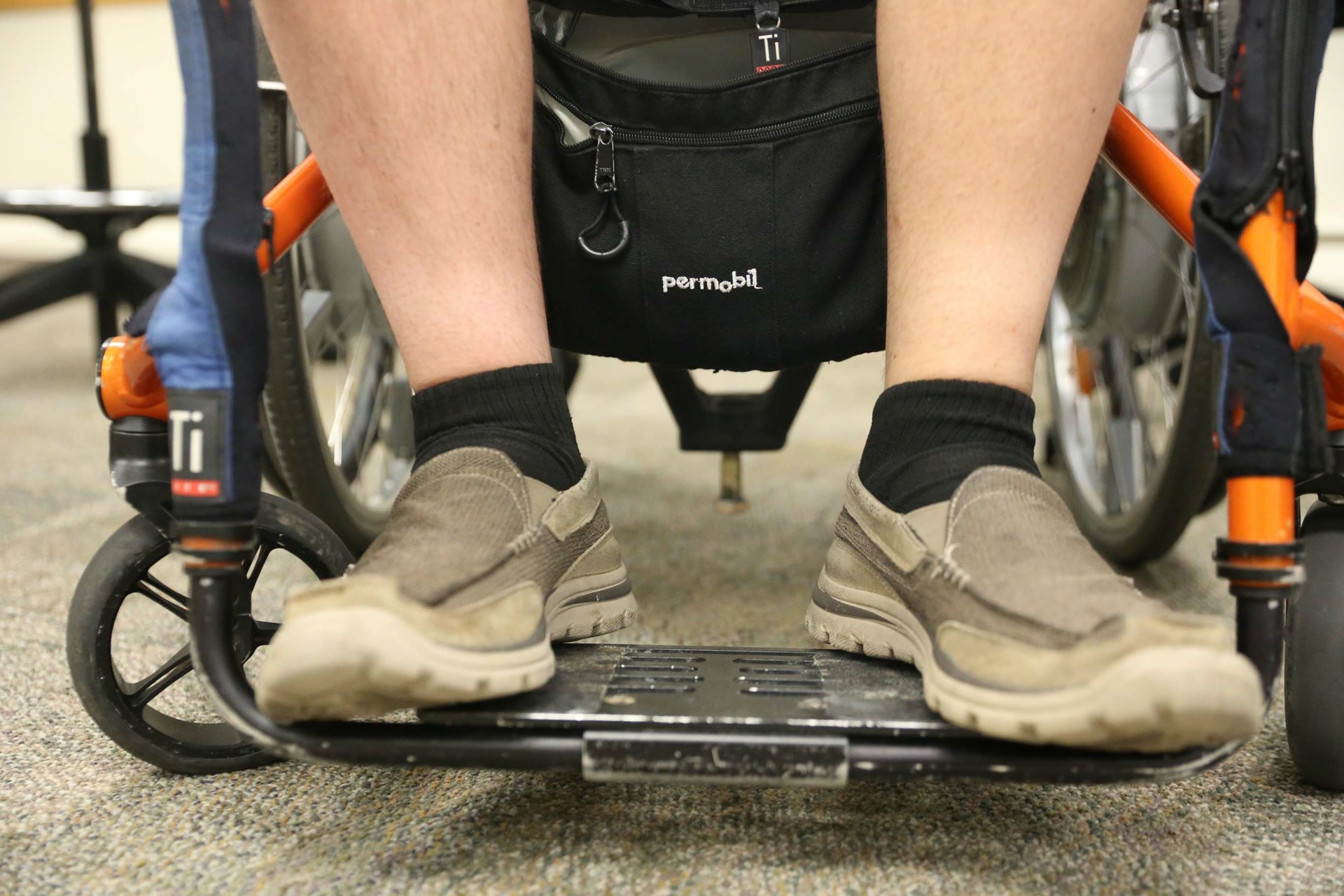
“I started off my schooling career at BYU-Idaho in 2017, and five weeks into that is when I got paralyzed,” Camit said. “And long story short, I basically spent the rest of the year in rehab. I was only twenty-one.”
Camit is one of the 3 million people in the U.S. that uses a wheelchair, and one of only 294,000 people in the country that have spinal cord injuries.
For people like Camit, navigating everyday situations can be challenging, especially when you’re a college student.

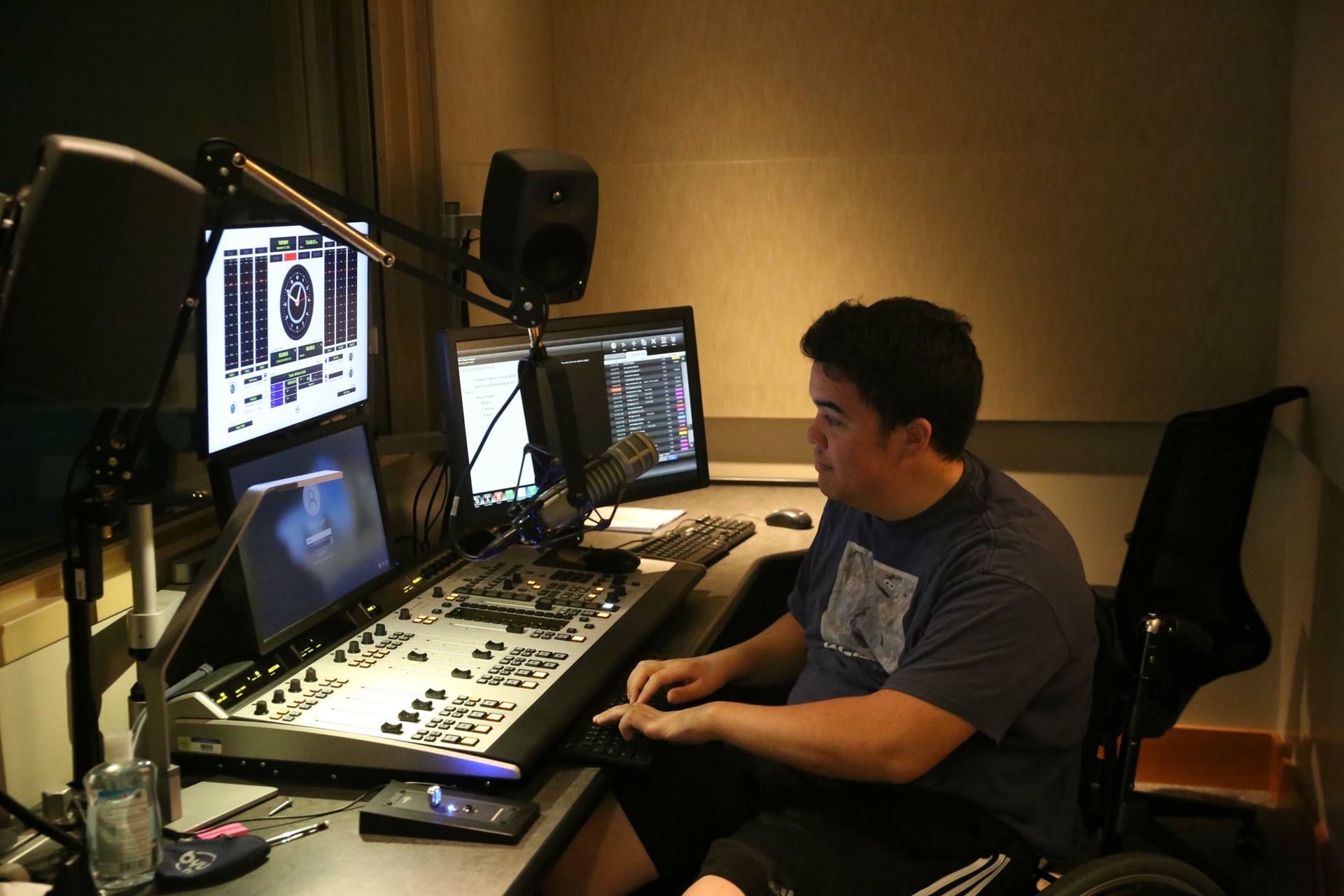
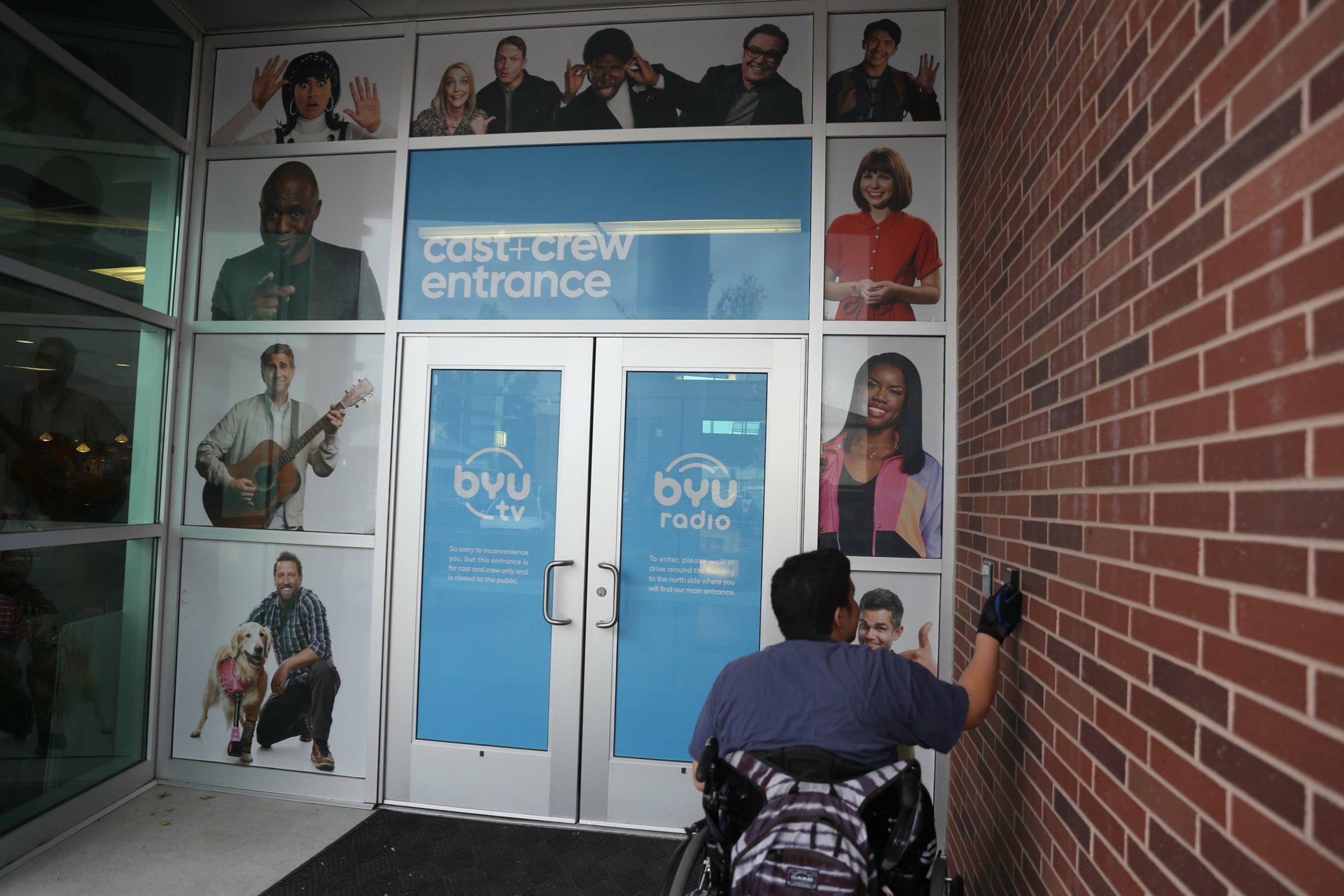

“As far as getting to campus is concerned, it’s not the most inconvenient thing, but oh my gosh, there are hills aplenty here,” Camit said.
With campuses primarily built for the general population, accommodations are made for individuals that need other accessibility options. However, accessibility issues on college campuses are still prevalent.
“I’d say the most difficult part about that is simply just getting into doors sometimes. It can be tough because the buttons are hit or miss,” he said.
Other students, like Walker Murphy, share similar sentiments.
“Whenever I introduce myself to someone usually I tell this joke: ‘My name’s Walker. It’s funny ‘cause I can’t walk that well’,” Murphy said.
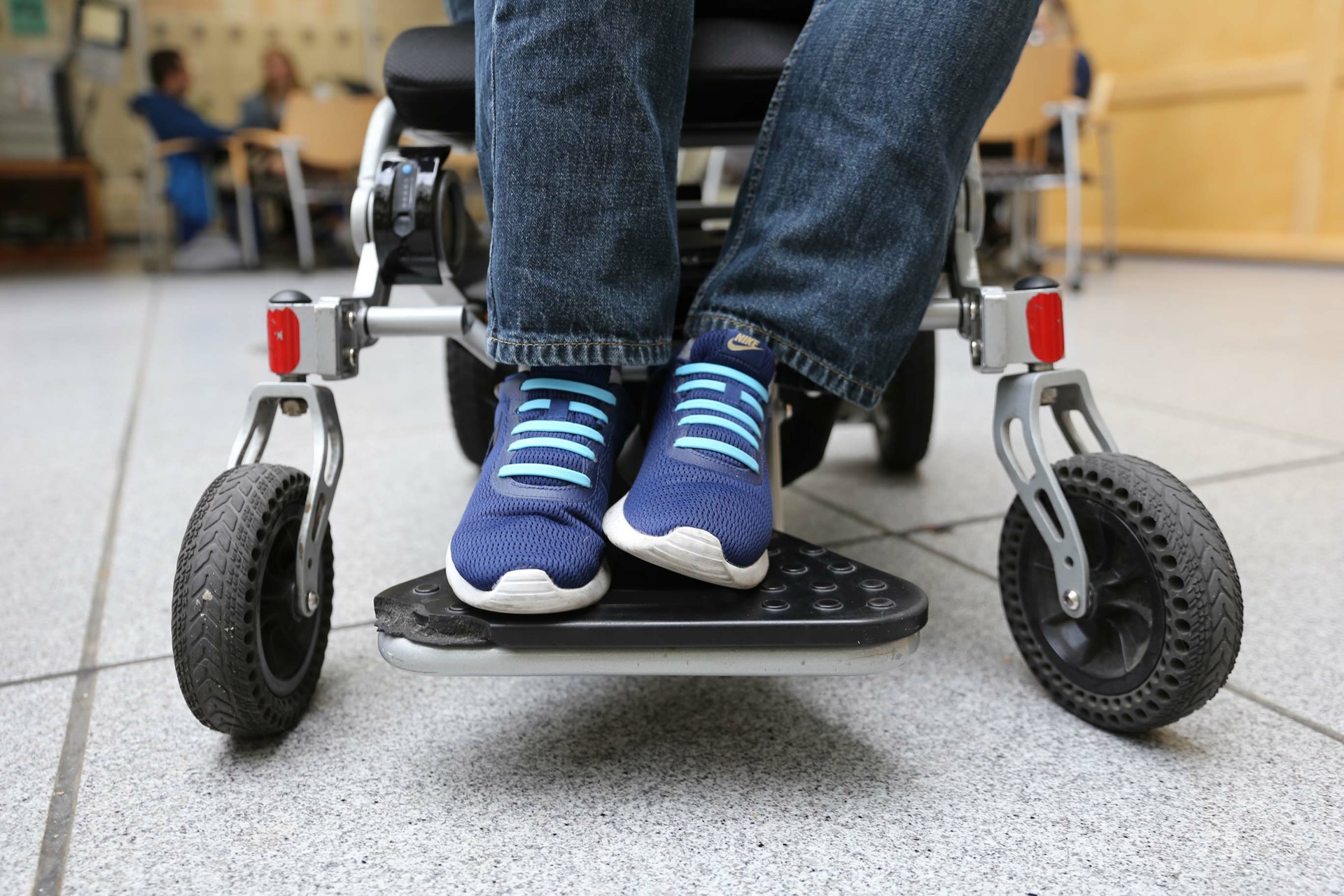
Murphy, an accounting student, was diagnosed with muscular dystrophy at four years old. Though able to walk at a younger age, he transitioned to using a wheelchair full time in January of 2021, when he was seventeen.
“Usually by twelve you’re not walking, so I’ve done good so far. I’m nineteen now. At school I almost always used a wheelchair for longer distances. It was kind of a gradual decline,” he said.
When asked about the challenges he faces on campus, Murphy raised the same issue as Camit – door access and buttons.
“One thing that’s kind of big, is there’s a good amount of buttons that automatically open doors, but I haven’t found any bathrooms on campus that have that, which gets difficult. I can push open doors fine, but pulling them open and trying to get through is weird,” Murphy said. He added that double-doored bathrooms are also a concern.
The location of accessible bathrooms at BYU can be found on university websites, but are non-existent on the BYU app. Following links on BYU’s Accessibility Center website, maps are outdated and highlighted by hand.
At other universities, initiative has been taken to ensure bathrooms are easily accessible for disabled students.
“Before BYU I went to a community college in California. There was one, maybe two bathrooms across the whole campus that had a button and I knew about them,” Murphy said.
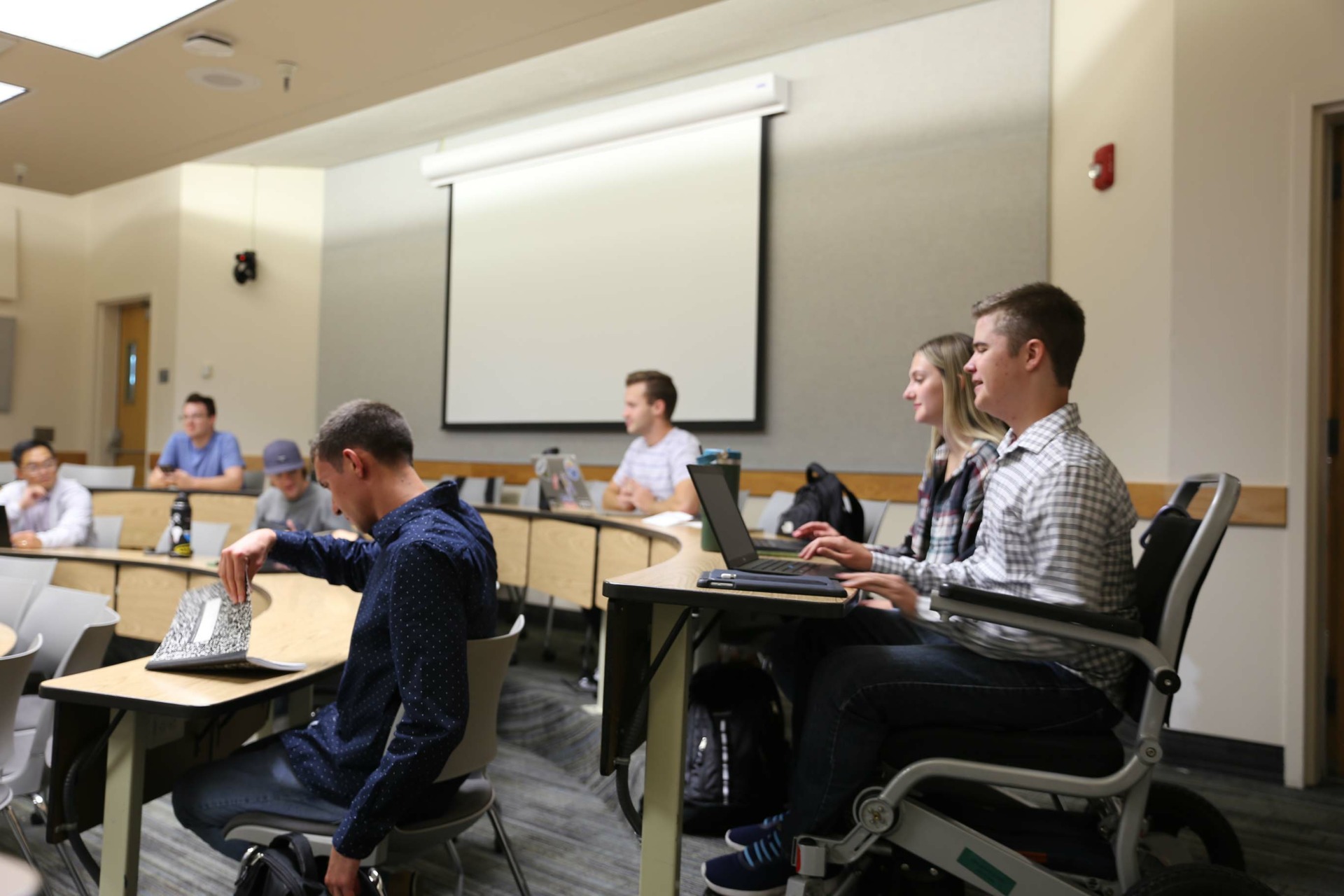
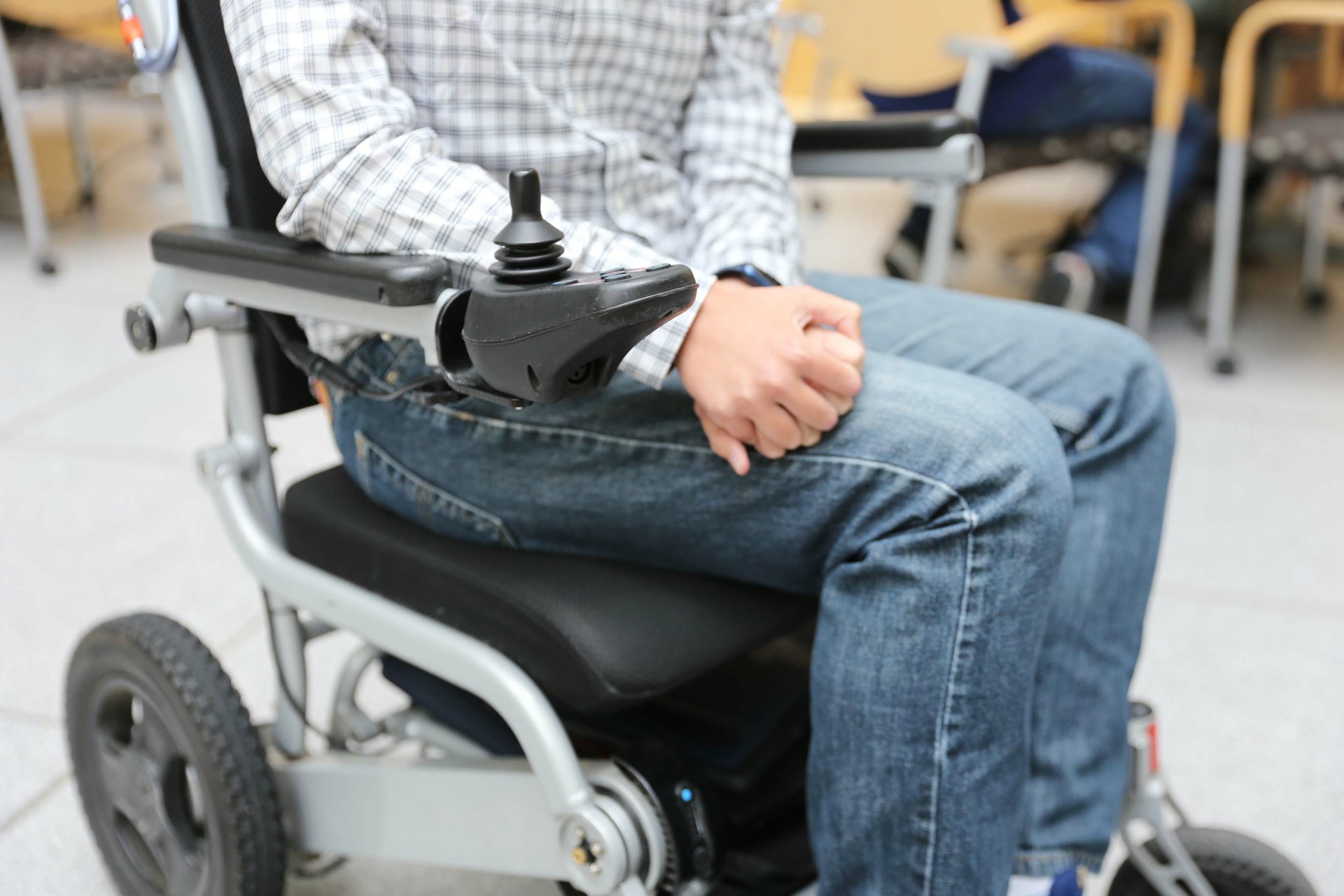
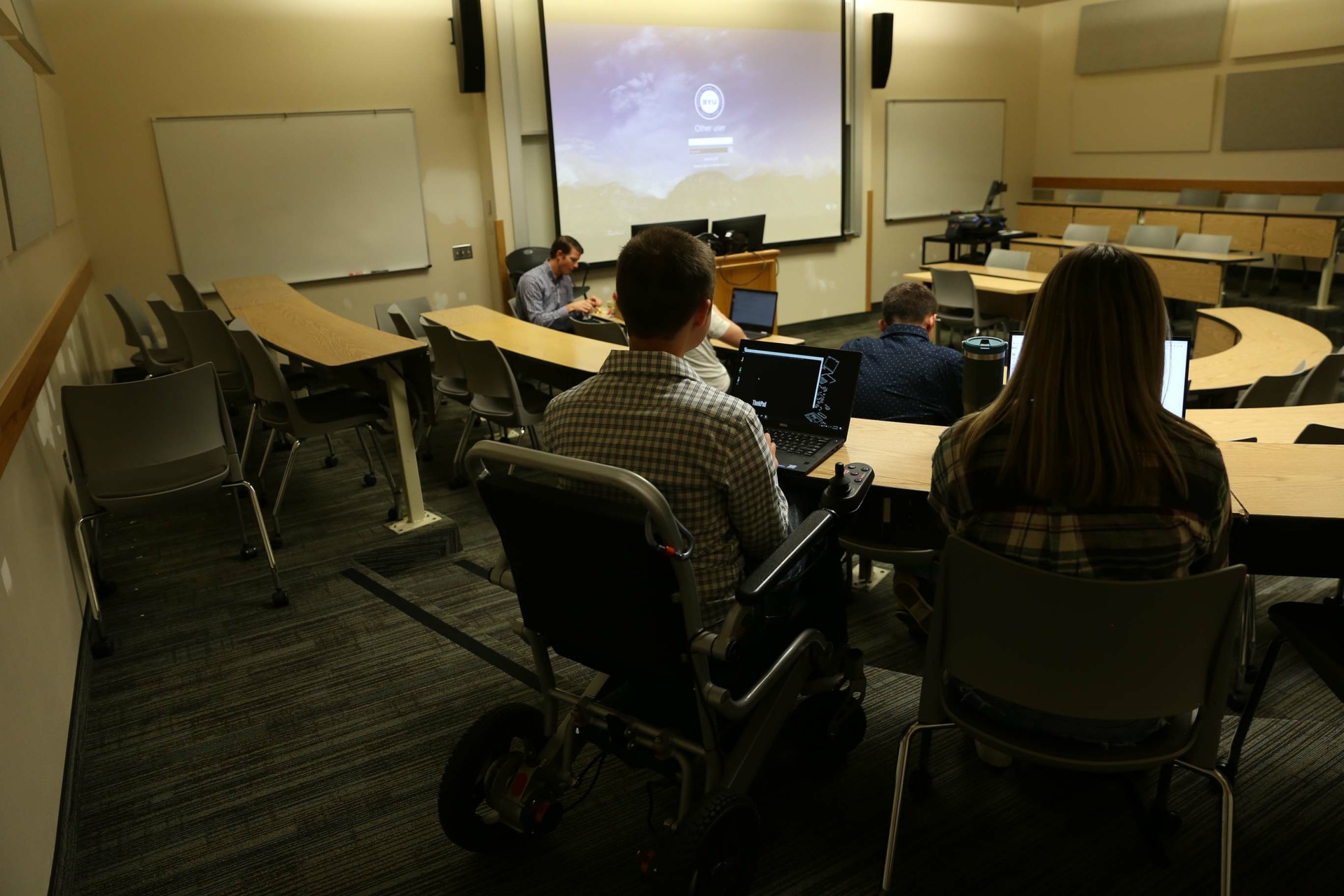

Though ramps on campus are being updated to meet Americans with Disabilities Act regulations, electronic access is one of the main accessibility issues for students at BYU. For Daniel Andersen, a master’s student in mass communications, an elevator incident a few weeks ago highlighted this issue.
“I got stuck on the third floor a couple of weeks ago,” Andersen said. “I thought, ‘Oh I’ll wait for maintenance. I don’t have anything going on for the rest of the afternoon.’ An hour later they’re like, ‘Yeah, we’re not going to be able to fix it today.’ Well, that’s the only elevator in this building so what am I going to do, right? So, we called the fire department and they hoisted me down.”
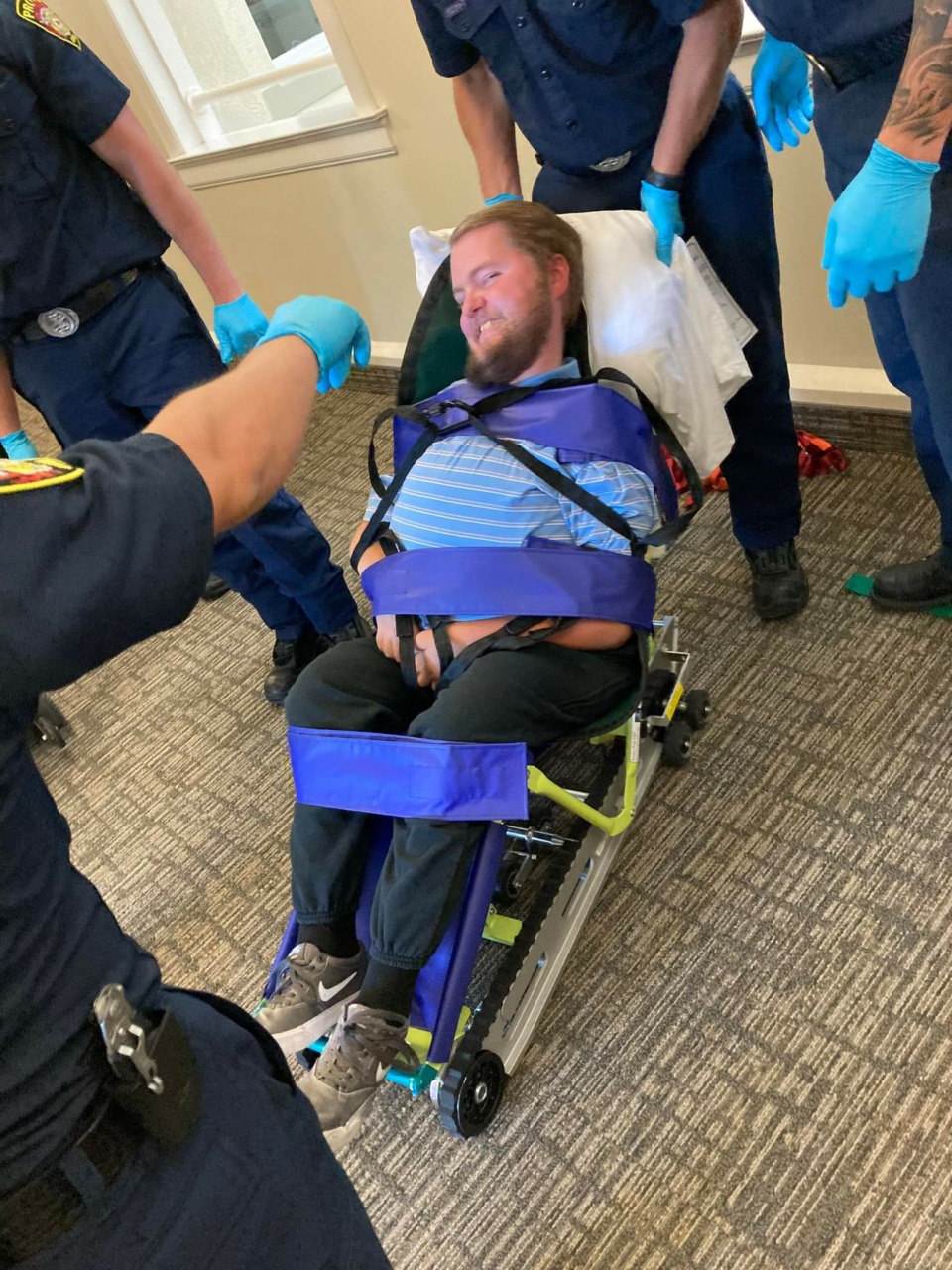
Andersen, who has used a motorized wheelchair since the age of five due to spinal muscular atrophy type 2, was carried down three stories of the Brimhall Building by the fire department. His chair was attached to carabiners and motorcycle tie-downs, and hoisted down as well.
“Thankfully that scenario ended well. Nobody got hurt – it wasn’t an emergency. But the elevator wasn’t able to be fixed for four or five days because they didn’t know what was going on,” he said. “From what I’ve heard it breaks about three times a semester.”
With concerns for elevator mechanics and electronic access aside, Andersen rates BYU’s campus a seven out of ten for accessibility.
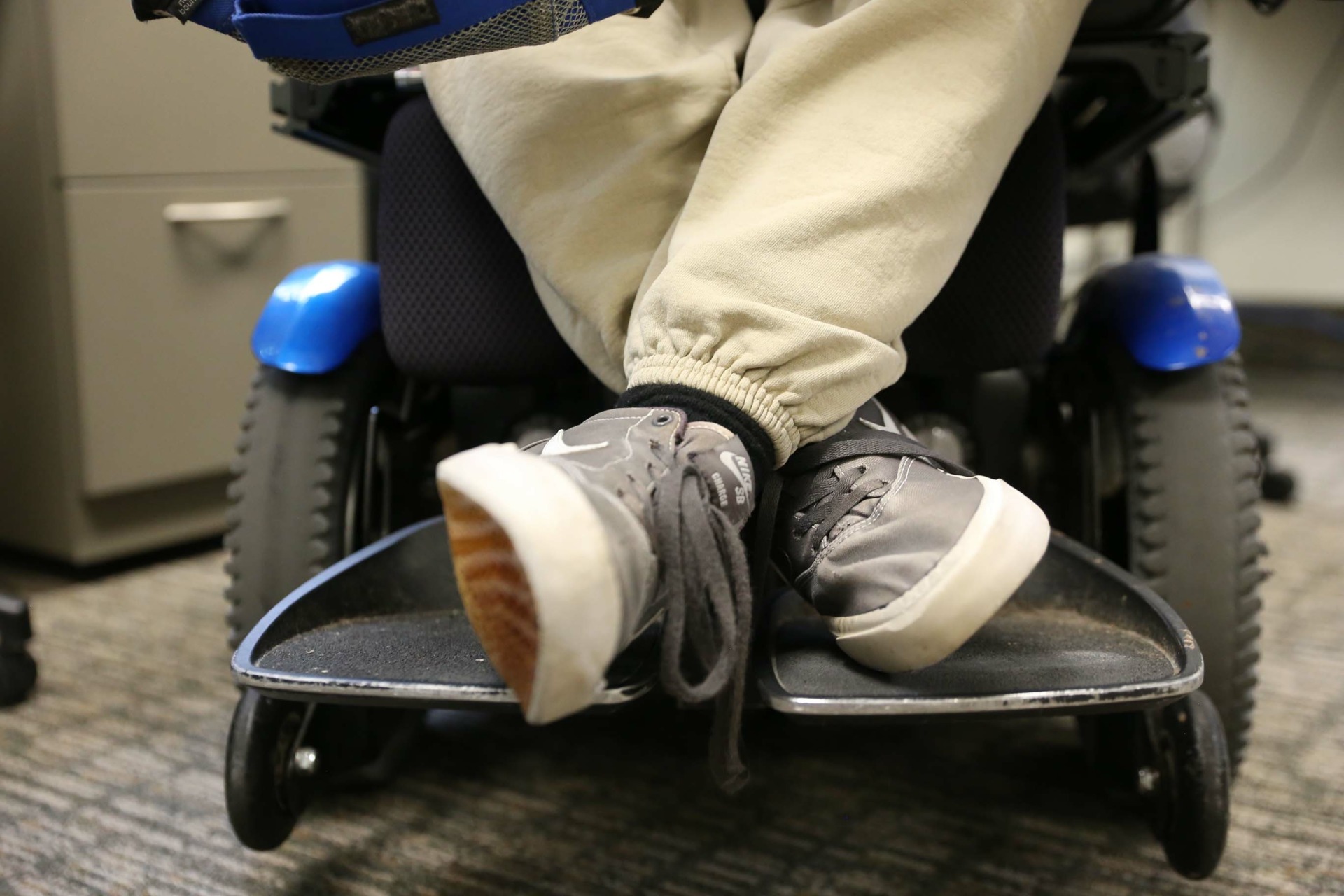
“When I first came to BYU I was a little surprised at how difficult it was to get around,” Andersen said. “But as I saw other universities I thought, ‘Oh BYU isn’t actually that bad.’”
When asked what improvements he would like to see at BYU, Andersen mentioned UVU’s integrated campus layout, saying he would like to eventually see BYU take a similar approach.
“If you go into one building you can choose to go inside or outside,” he said. “During the fall, summer or spring, BYU’s actually not that bad.”
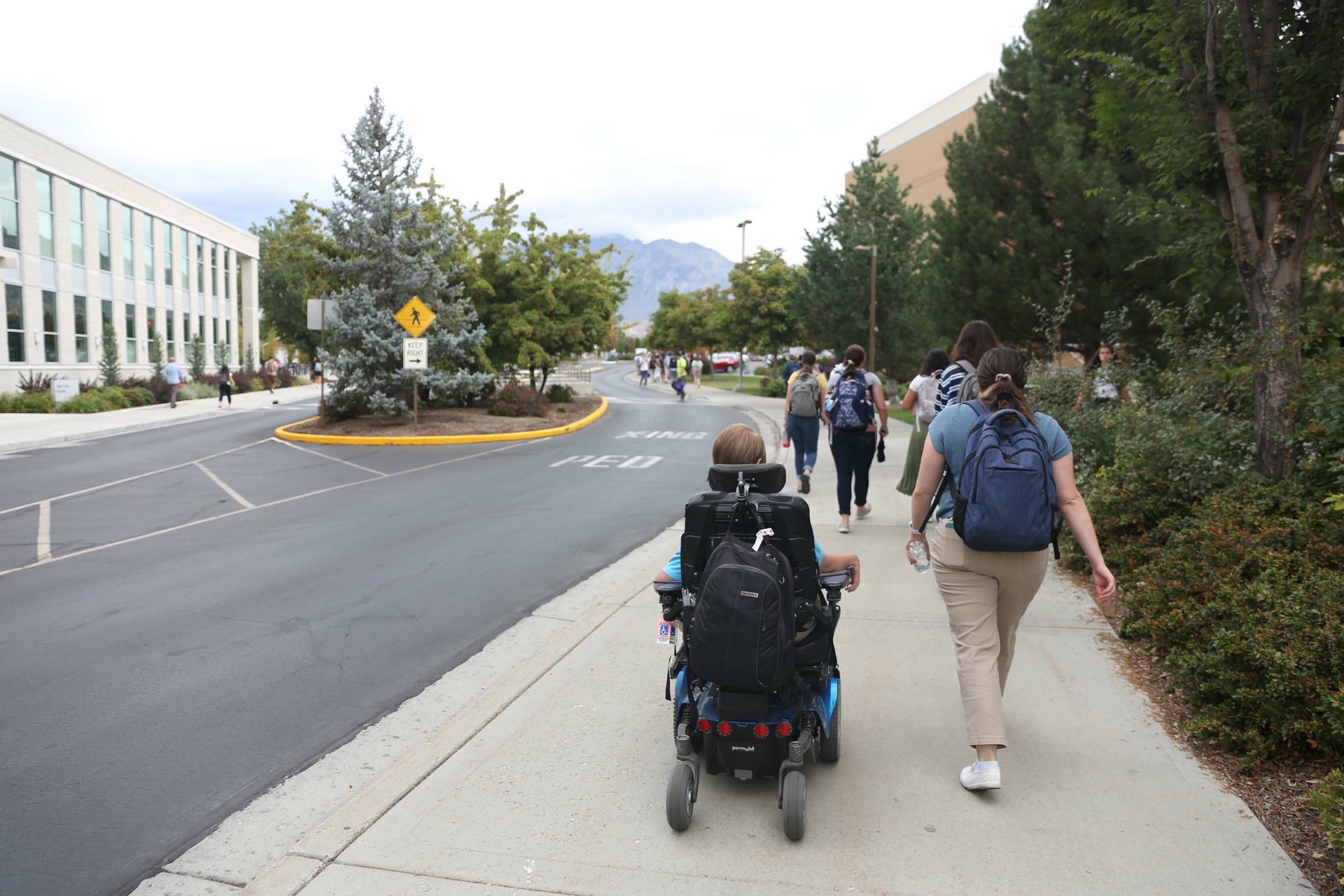
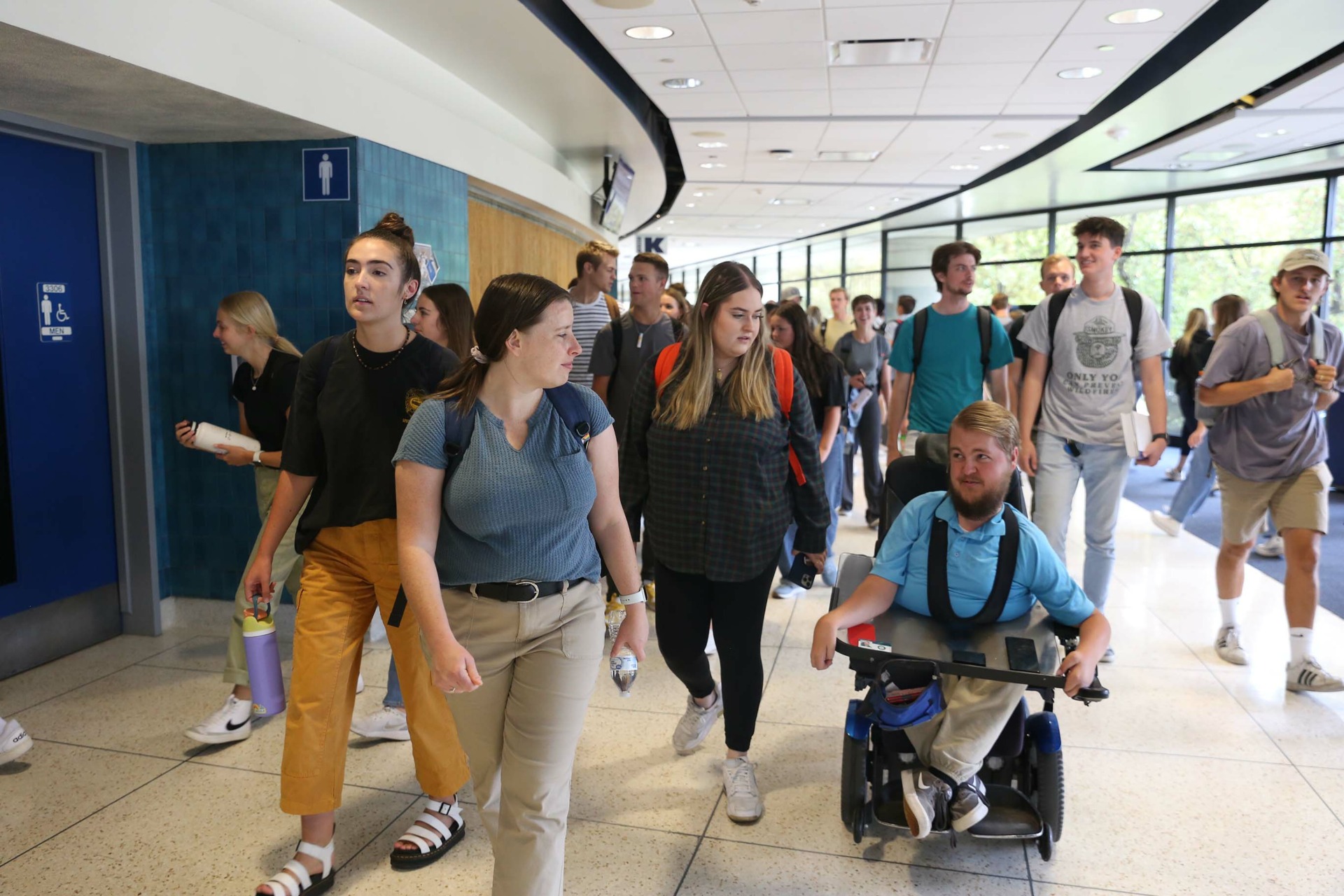
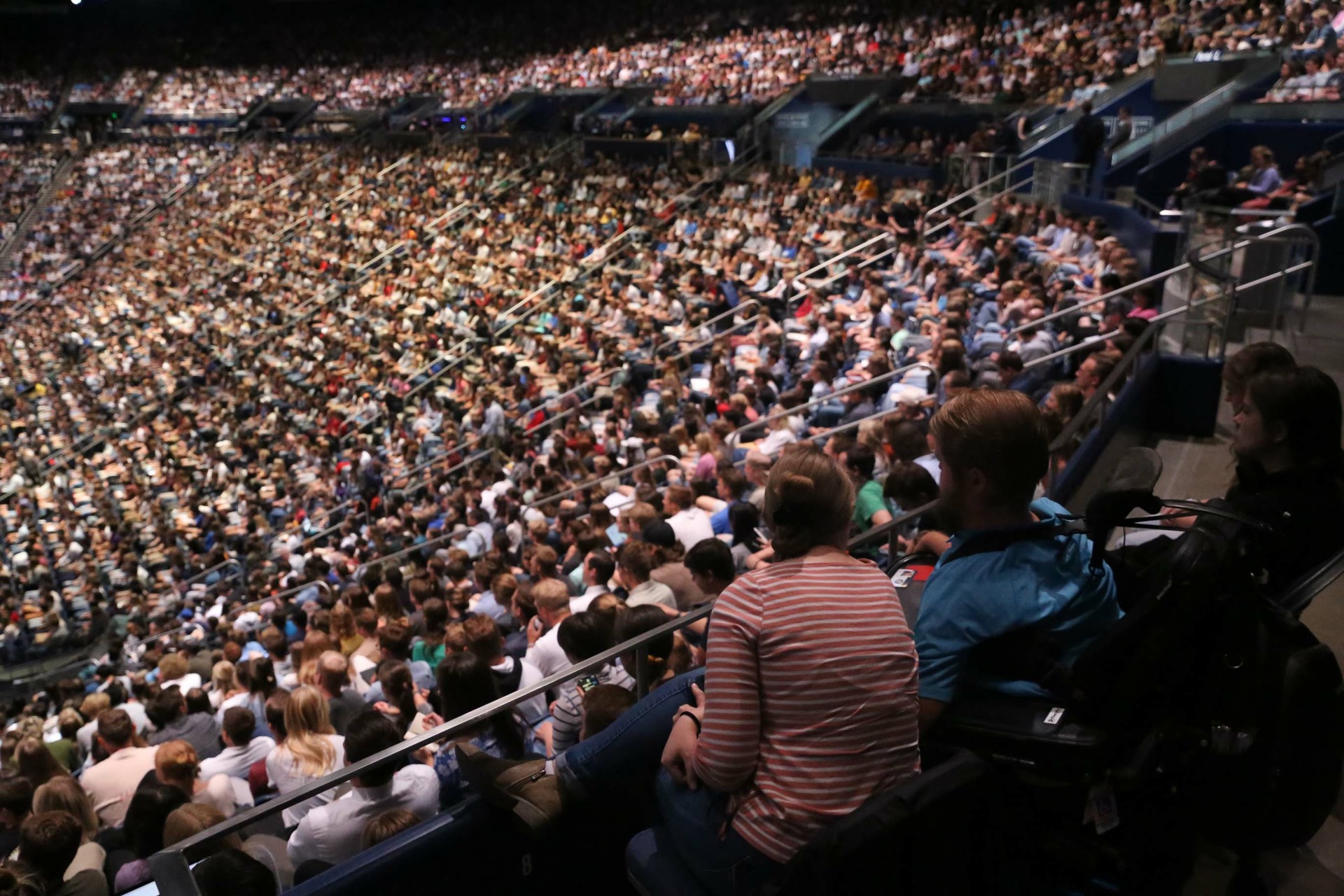

The recent completion of the accessible ramp between the library and the Wilkinson Student Center was a celebrated accomplishment by Andersen, Camit and other students on campus. Speaking of the improvements to campus accessibility, Andersen made the following observations.
“One thing I’ve noticed a lot about BYU is that there is momentum. You just have to wait to see it play out. My dad has this saying: BYU is like a ship – a huge ship. It’s not an itty-bitty little boat that can turn on a dime with a moment’s notice. It can turn, it will turn, and once it starts turning it’s not stopping. But, it’s going to take time to turn in a different direction than it’s already turning,” he said of BYU’s gradual improvements. “It’s gonna happen, we’re getting there, we’ve got momentum. Keep bringing up these topics to reaffirm that it’s a priority, and then wait for it to follow through.”
Another student who celebrated the completion of the new ramp between the library and the Wilkinson Student Center is Hayden Low.
“I’ve only been told by a cop to stop once,” Low said. His wheelchair, with an adaptive, detachable device, can go 15–17 miles an hour. “I get from the Brick Oven to the Wilk in four minutes.”
In January 2019, Low hit a tree while skiing in Park City and was permanently paralyzed from the chest down.
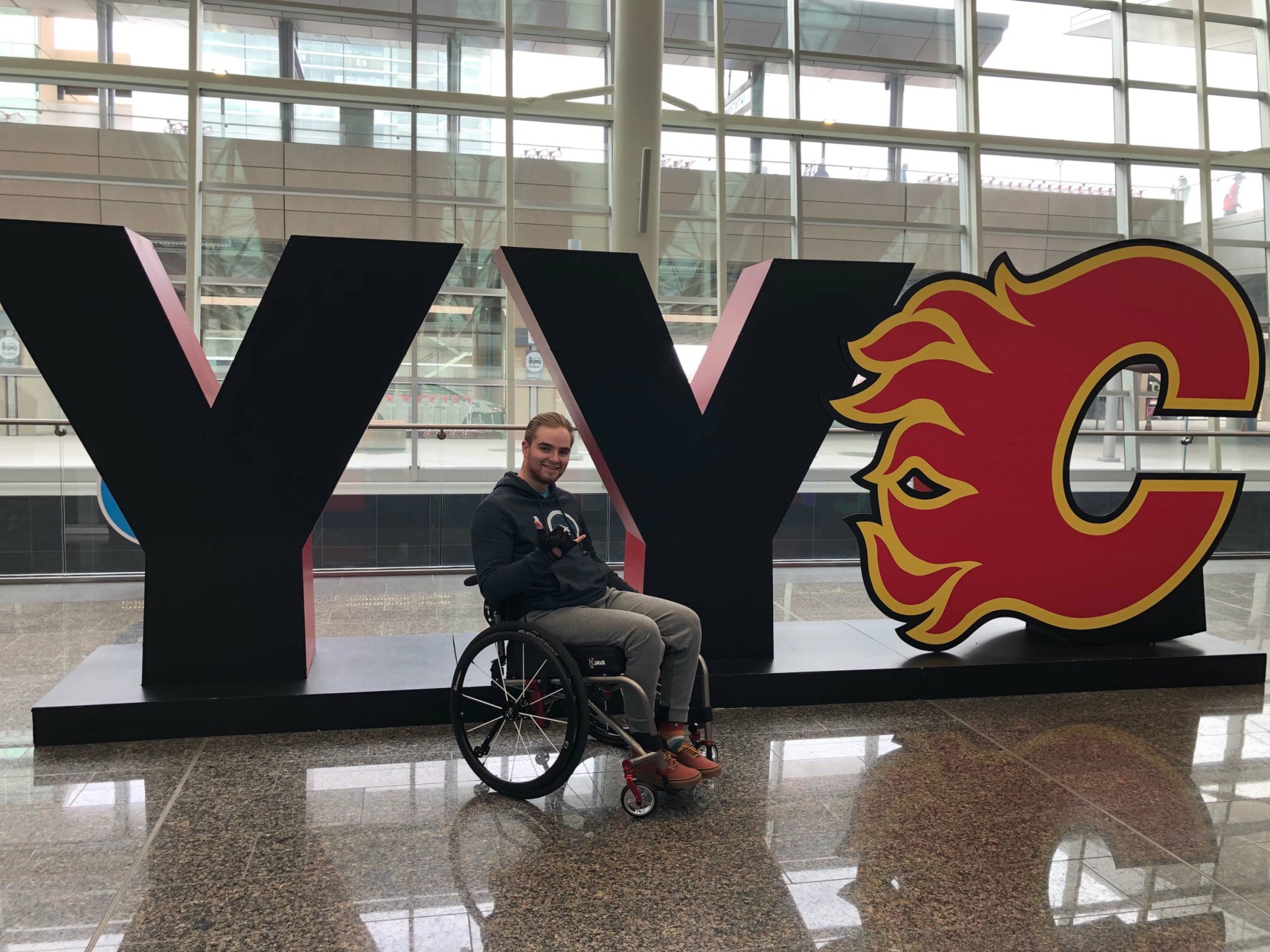
“Provo is the absolute worst when it comes to accessibility,” Low said. He has lived in Liberty on Eighth south of BYU campus since his accident in 2019. However, it wasn’t an easy transition.
“We had to put in $10,000 of our own money to make it manageable for me,” Low said of renovations he made to a dwelling at Liberty on Eighth. “At the end of the day it works, but it’s actually not that accessible.”
A student in the entrepreneurship program within the Marriott School of Business, Low shared his thoughts on BYU’s bathroom accessibility issues, and agreed with Camit, Andersen and Murphy.
“What I like is there’s a couple spots in the library where you have your more or less private bathroom,” Low said. “Ultimately, I’m living at the Tanner building right now, and it doesn’t have a bathroom like that. I’m waiting my turn cramped in this small bathroom for this accessible stall because ultimately someone’s going to be in it because it’s busy. And I’m in people’s way and it’s awkward. So there’s no private bathroom in that building which is sad.”
For students with disabilities, services on campus are available to obtain classroom accommodations through the Accessibility Center. Though these services are available, Low said that he uses it as an advisement center more than anything because it feels more like a “safe space.” However, he shared his thoughts on representation, and how the Accessibility Center accommodates physical disabilities.
“Because I’m in a wheelchair I don’t feel represented. I went to the Delta Alpha Pi Club just to kind of go and see what it was all about. I’m a part of it,” Low said of the Honors Society for students with disabilities. “I was the only person in a wheelchair there. I felt pretty uncomfortable and out of place, because the majority of the Accessibility Center caters to ‘invisible disabilities’ for people with depression or anxiety, things like that.”
Low said that although he has faced difficulty, he feels his life is actually better now that he’s in a wheelchair.
“I have more fun now. I’ve been mountain biking, paragliding, skiing, etc.,” Low said.
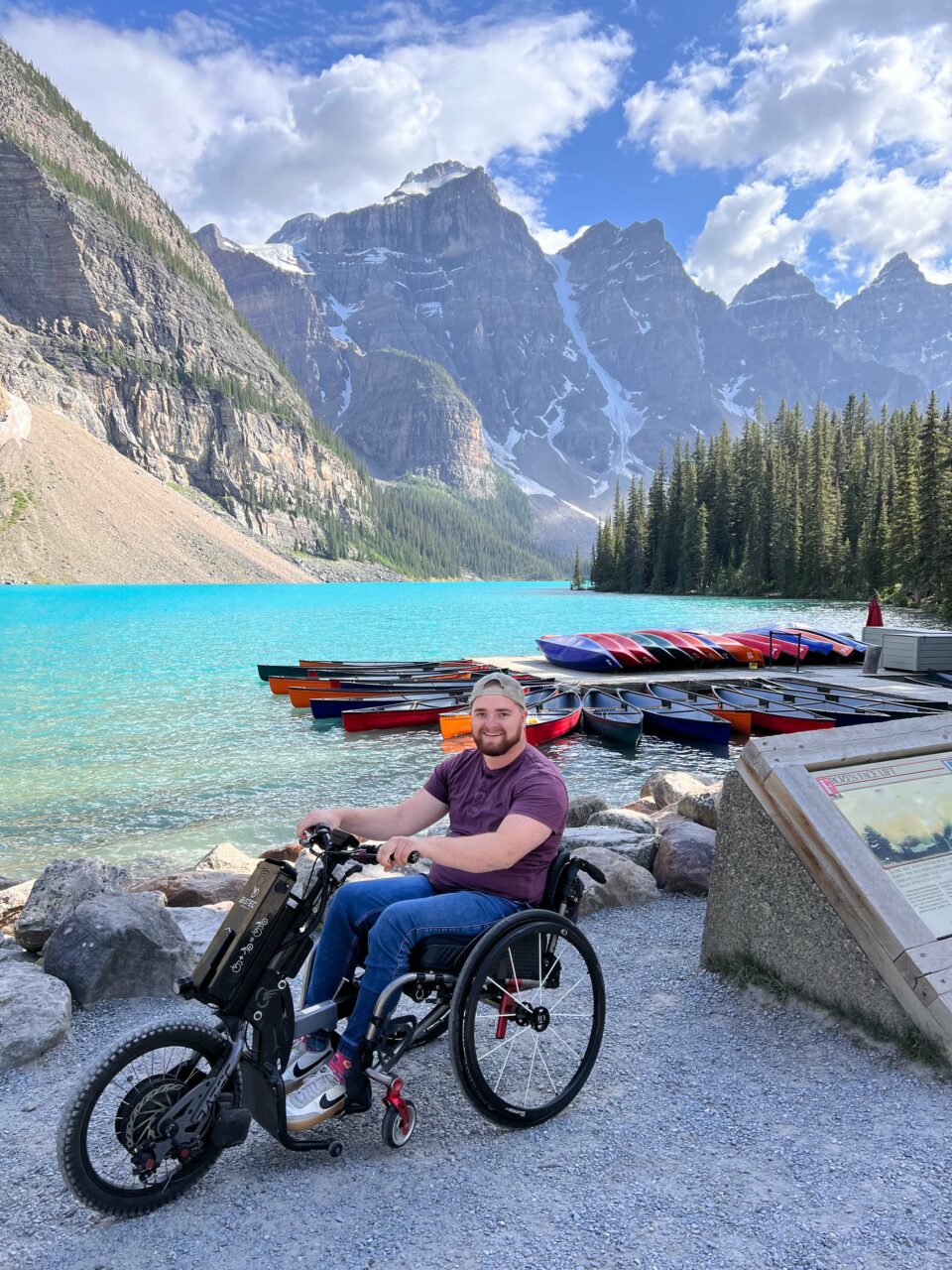
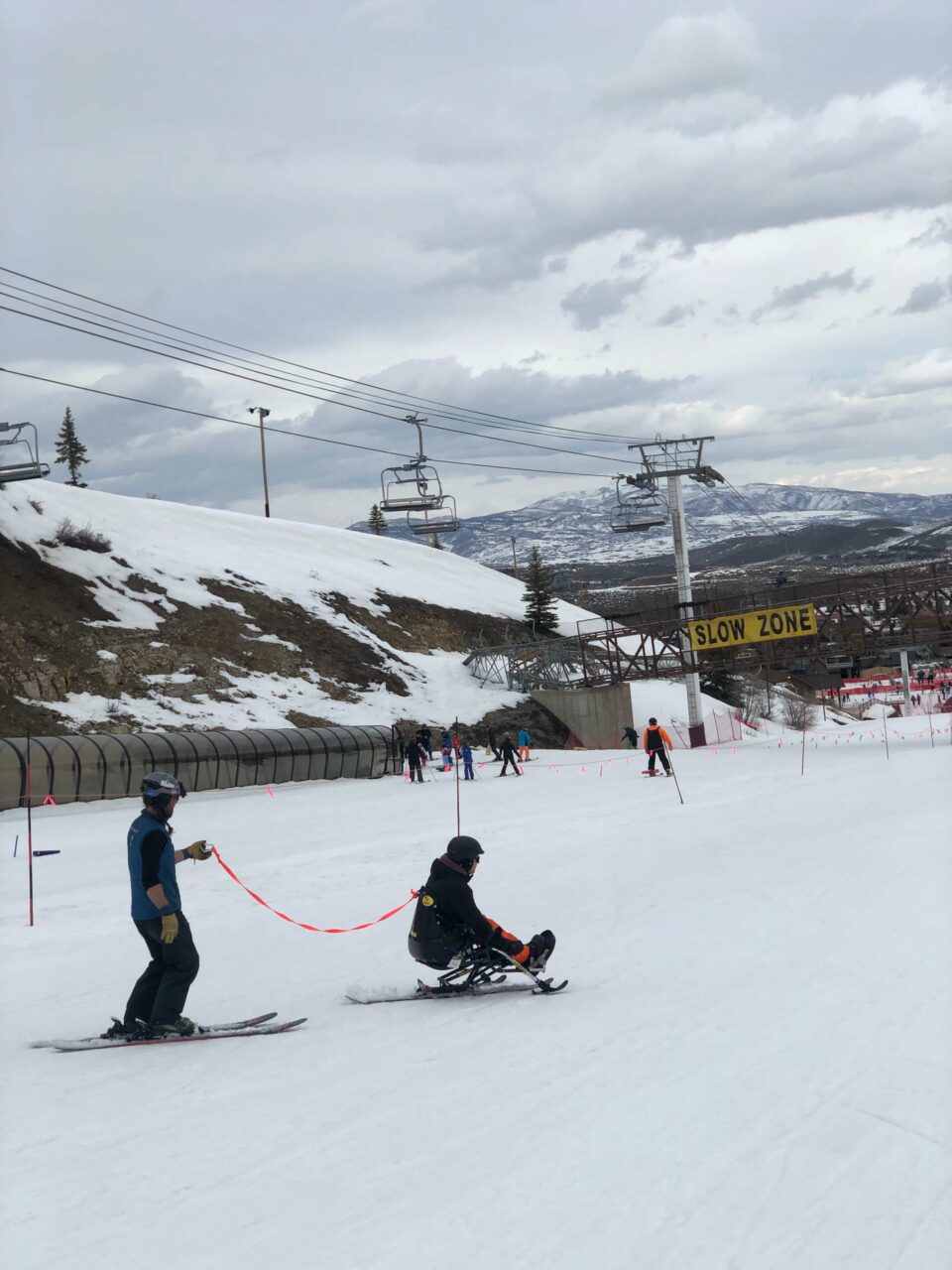


Andersen shared a message that can strengthen the larger BYU community, drawing similarities between each unique student’s experiences.
“It’s hard to know what is appropriate to discuss and how it’s appropriate to engage and converse with me. The answer is actually really simple – just do it and I’ll tell you if there are any issues,” he said. “I don’t think I’m alone in this. I think that this is an experience where many people feel like an outsider compared to the typical norm at BYU. It’s lonely for at least the first little bit when you’re trying to find where you click and find friends that understand you and relate to you, all that kind of stuff.”
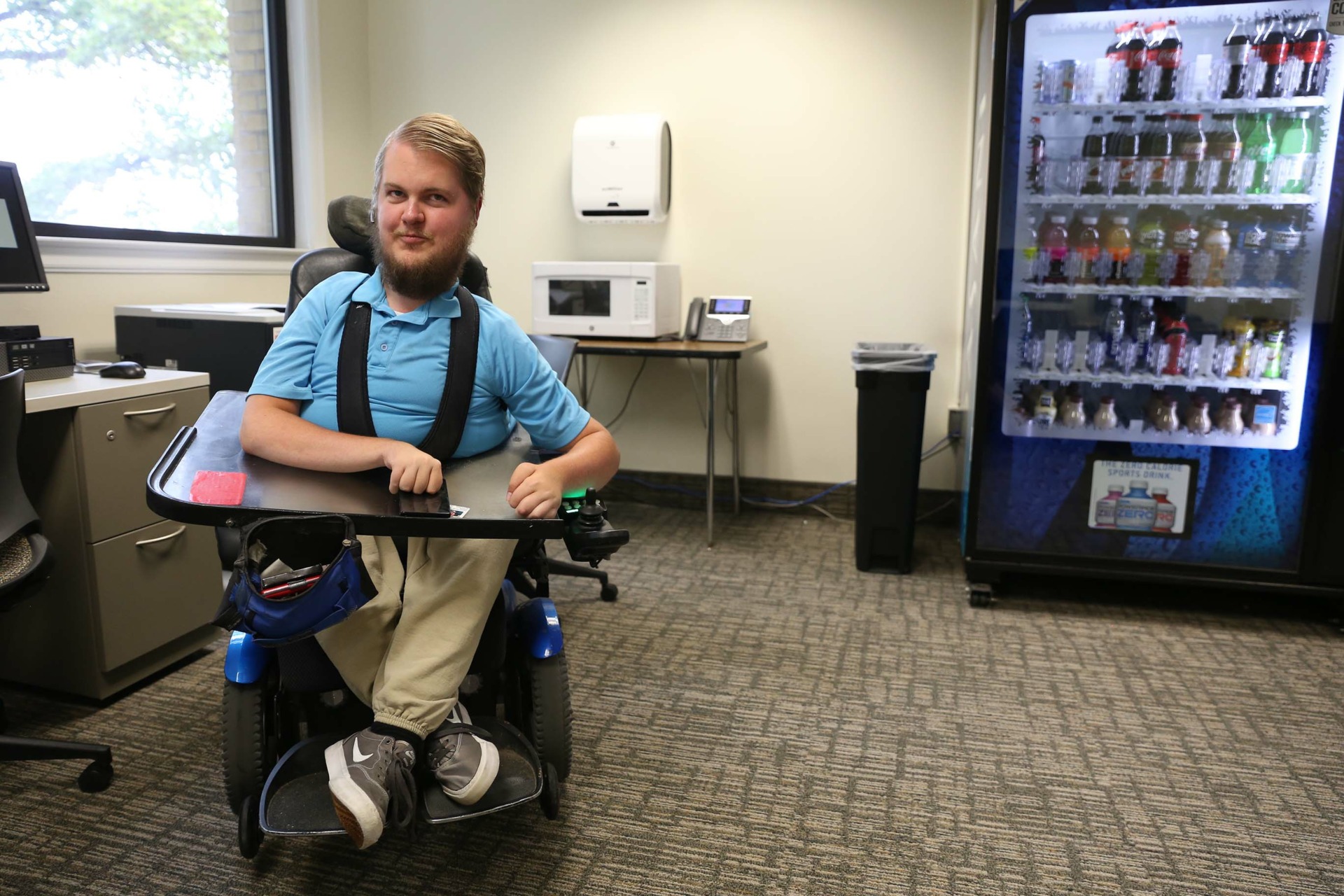
Of BYU’s current climate, Andersen shared the following:
“As we’ve been discussing not just students with disabilities, but all students at BYU that have unique life experiences, I think that we as a community have been more open to just having conversations, and seeing where they go, and allowing that to build a community without putting any awkwardness or pressure on it. Just letting it happen. I think that’s made it a more inviting and welcoming place. Again, good momentum. We’re not all the way there, but I like what I’m seeing.”
Andersen produced a documentary earlier this year highlighting his experience with inclusion, accessibility, and achieving goals as a person with a disability. His film “I Am Limitless” can be viewed on Andersen’s Youtube page.
For more information on campus accessibility, visit the University Accessibility website.




